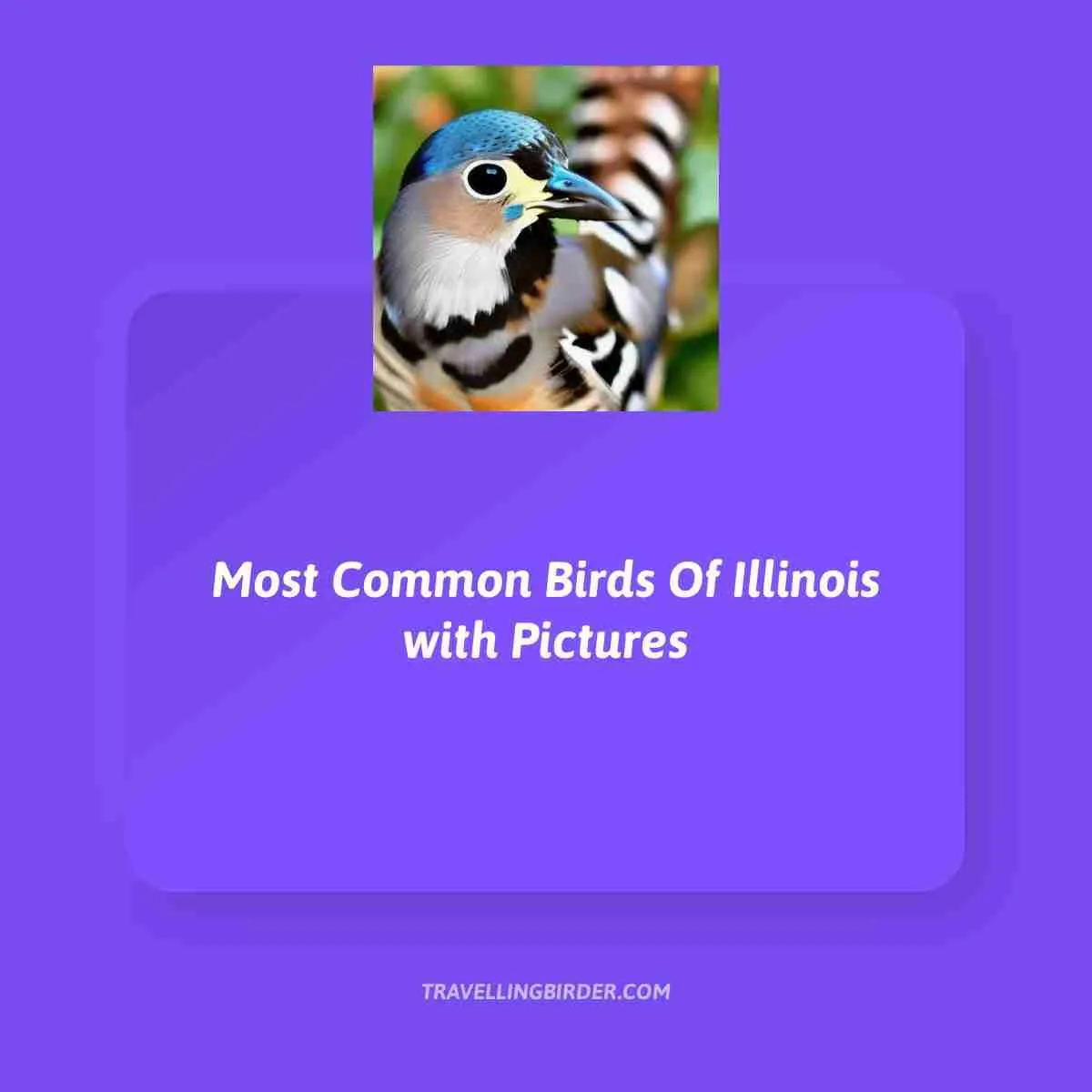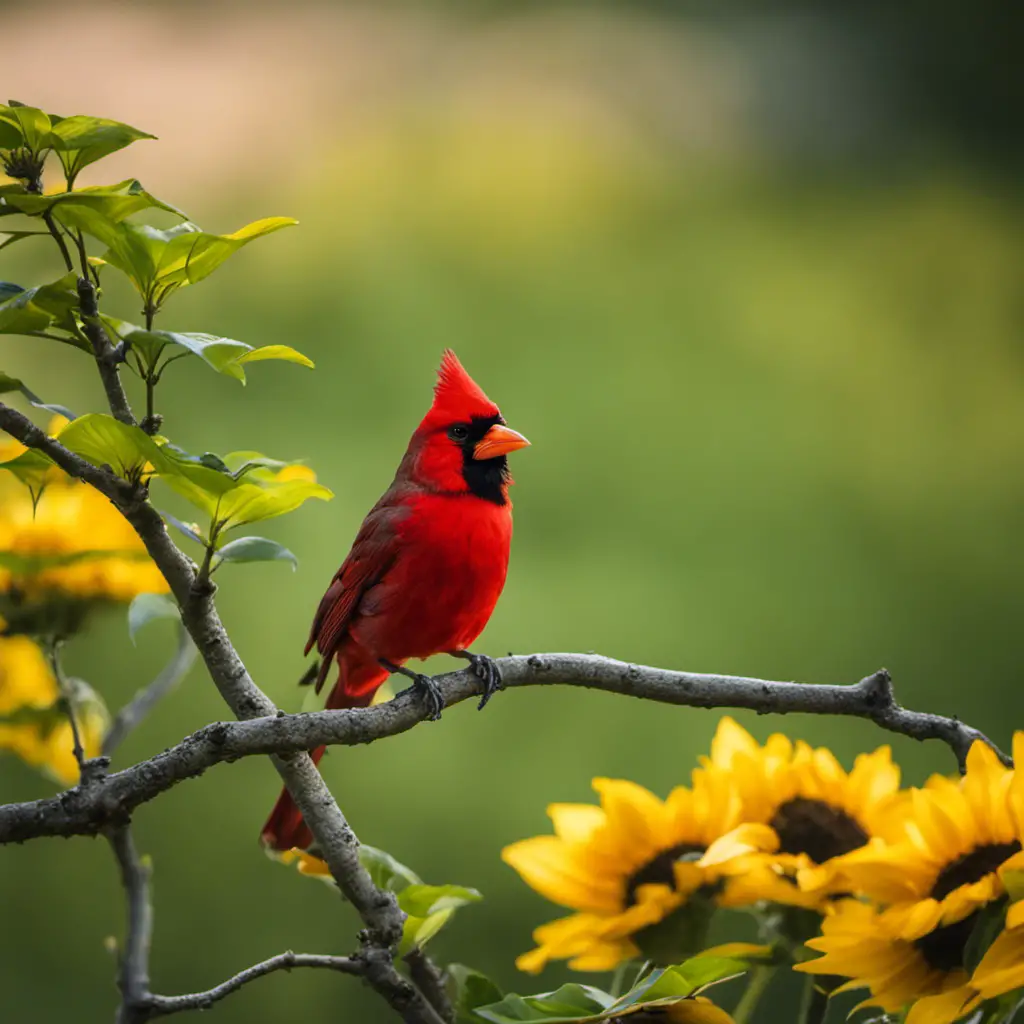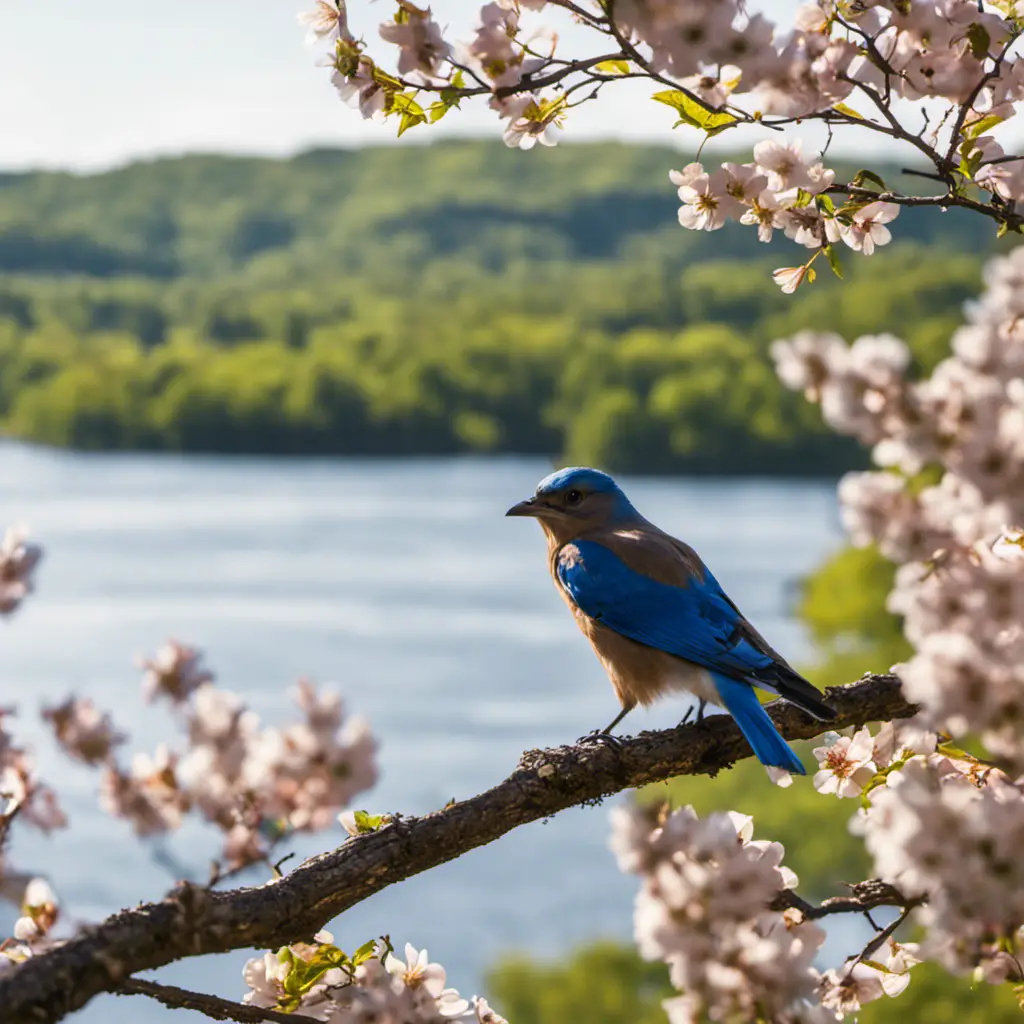Did you know that Michigan is home to more than 300 different species of birds? Some of these birds are common, while others are rare. In this blog post, we will take a look at some of the most common birds in Michigan. We will also discuss their habits and how to identify them. So, if you’re interested in learning more about Michigan’s feathered friends, keep reading!
Common Backyard Birds of Michigan:
American Goldfinch
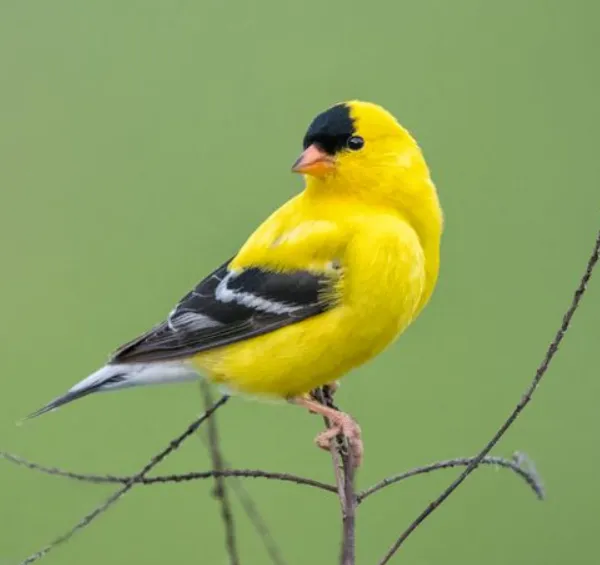
The American goldfinch is a small, sparrow-like bird with a short, forked tail. Males are bright yellow with black wings and tails; females are paler yellow with grayish-brown wings and tails. Goldfinches are found in open woodlands, edges, and meadows throughout the United States.
They eat mostly seeds and insects. In the winter, they often flock to feeders for sunflower seeds. Goldfinches are acrobatic fliers and often hang upside down while eating.
They build cup-shaped nests of plant fibers in trees or shrubs. American goldfinches are common birds that are not considered endangered.

House Finch
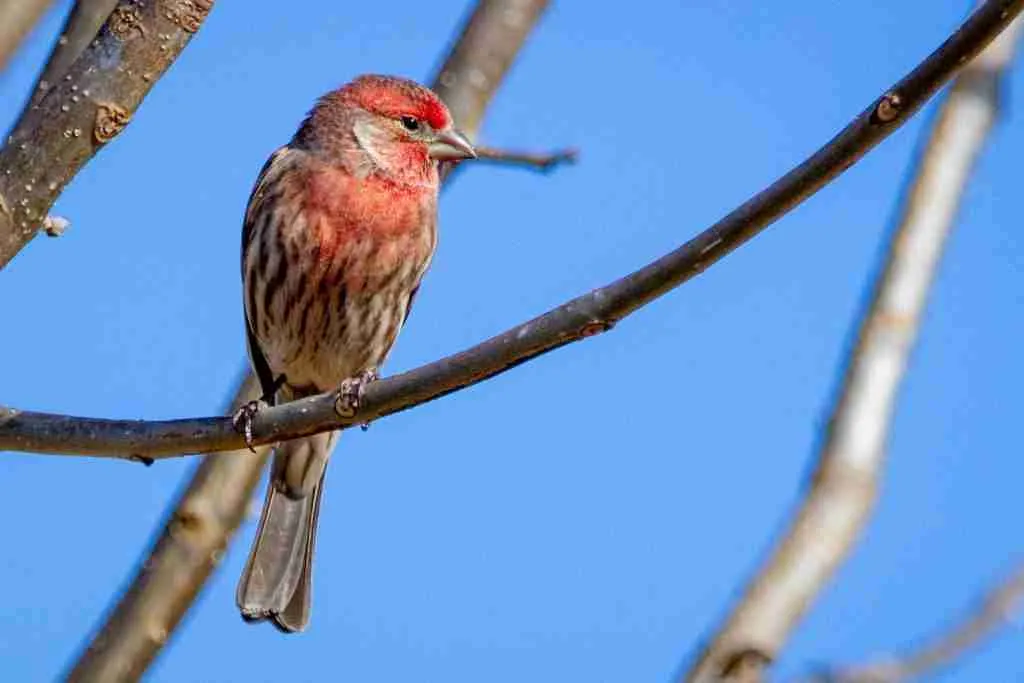
Identification: The house finch is a small songbird with a plump body and a short tail. The adult male has red on its head, breast, and back, with brown streaks on its sides. The female usually has gray-brown upperparts and streaked underparts. Both sexes have black wings with white bars. Juveniles are similar to females.
Diet: The house finch eats mainly seeds, but will also eat insects and fruits. They forage on the ground or in trees, often in flocks.
Size: The house finch is about five to six inches long.
Habitat: The house finch is found in open woodlands, forest edges, weedy fields, and gardens. They are also common around human habitation.
Behavior: The house finch is a social bird that often forms flocks. They are active birds that fly frequently and make short trills or warbles while in flight. The male house finch also sings a loud song during mating season.

Song Sparrow
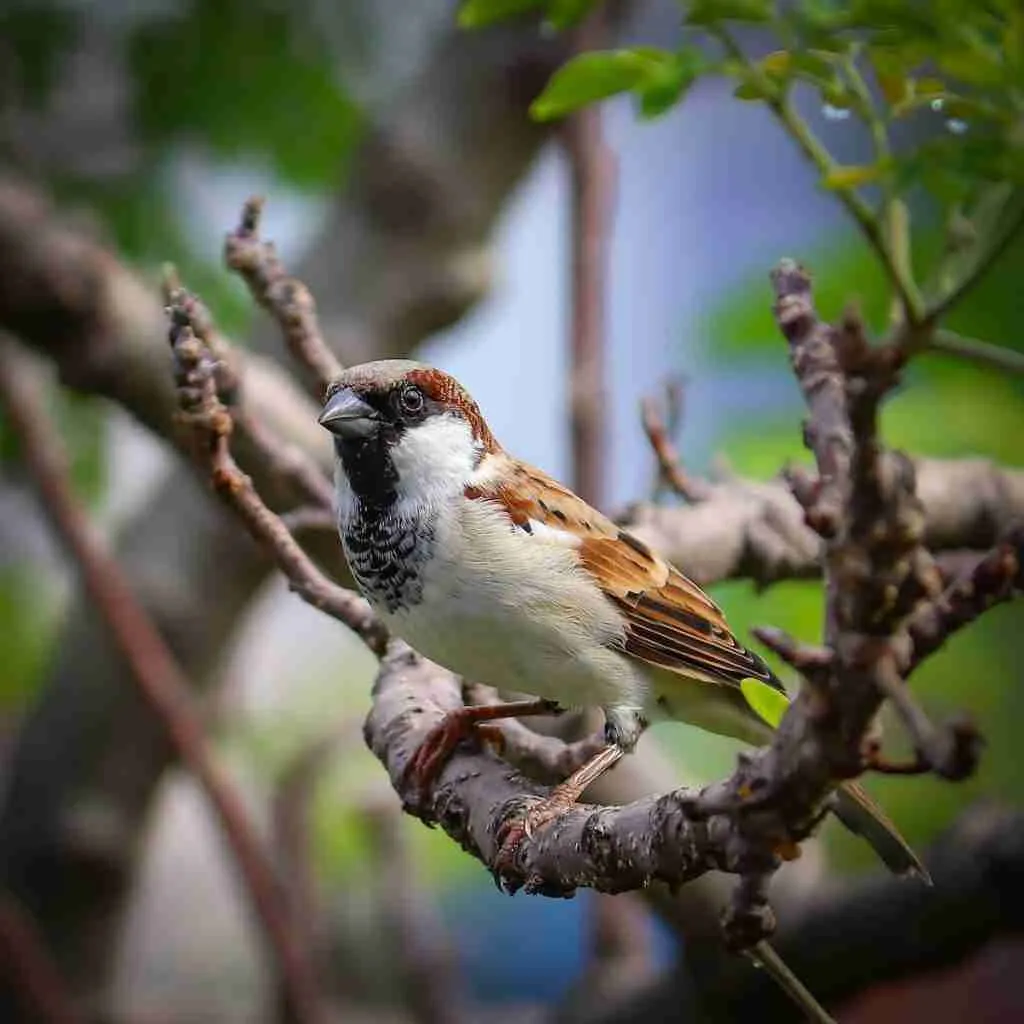
Song Sparrows are one of the most widespread birds in North America. You can find them in nearly any habitat, including urban areas, forests, and grasslands. Though they’re not the largest sparrows, they’re larger than house sparrows with a longer tail and bill. Males and females look similar with streaked brown upperparts and grayish underparts, but the males have a gray breast and crown.
Diet: Song Sparrows eat mostly insects and seeds. In the spring and summer, they forage for insects on the ground or in low vegetation. You can often see them hopping around with their tails cocked, looking for food. In the fall and winter, they switch to a diet of seeds and berries.
Size: Song Sparrows are medium-sized sparrows. They measure between five and seven inches in length with a wingspan of eight to ten inches.
Habitat: You can find Song Sparrows in nearly any habitat across North America, from forests to grasslands to urban areas. They’re common backyard birds in many parts of the country.
Behavior: Song Sparrows are shy and retiring birds. They usually stay close to the ground, foraging for food on the ground or in low vegetation.
You’re more likely to hear them before you see them, as they give a loud, trilling song from a hidden perch. Male Song Sparrows will also sing to defend their territory from other males. Breeding pairs build cup-shaped nests out of grass, twigs, and leaves.
The female lays three to five eggs, which hatch after about two weeks. Both parents help care for the young birds until they fledge and leave the nest a few weeks later.

Eastern Bluebird
(Sialia sialis)
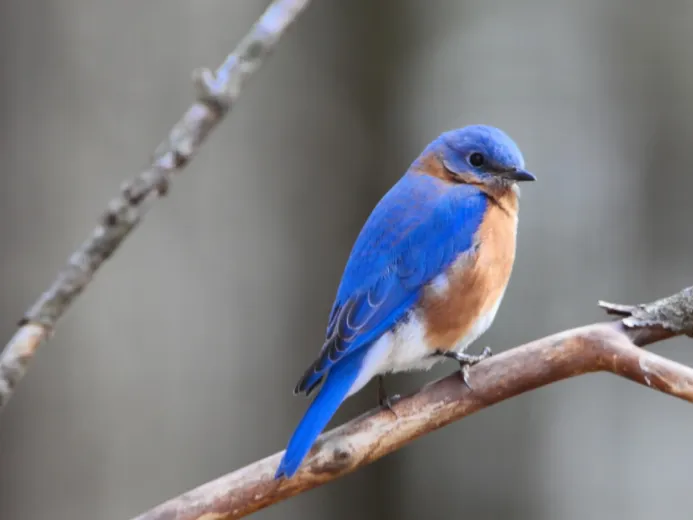
The Eastern Bluebird is a small thrush with blue upperparts, reddish breast, and white belly. They are found in open woodlands, farmlands, and parks. Their diet consists of insects and berries. These birds are about six to seven inches long with a wingspan of ten inches. Eastern Bluebirds mate for life and nests are built in tree cavities. These birds will sometimes use man-made nest boxes.
The male Eastern Bluebird has blue upperparts with a reddish breast while the female has grayish upperparts with a blue tinge on the wings and tail. Both sexes have white bellies. Juveniles have brown upperparts with pale streaks.
The song of the Eastern Bluebird is a series of clear notes that descending in pitch: “chur chur chur.” The call is a sharp “tik.”

Northern Cardinals
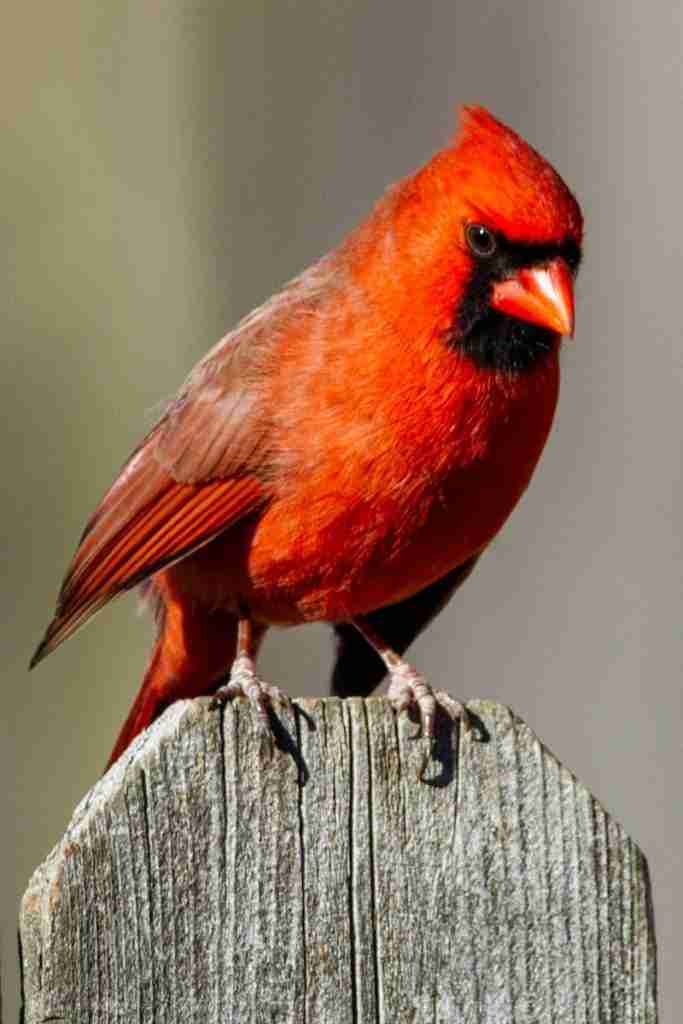
Northern Cardinals are one of the most easily identified birds in Michigan. They are red with a black mask around their eyes. Northern Cardinals are songbirds and their songs are a series of short notes followed by a trill. Male Northern Cardinals will also sing to defend their territory.
These birds are found in woodlands, gardens, and swamps. They eat seeds, insects, berries. Northern Cardinal is about nine inches long.

White-Breasted Nuthatch
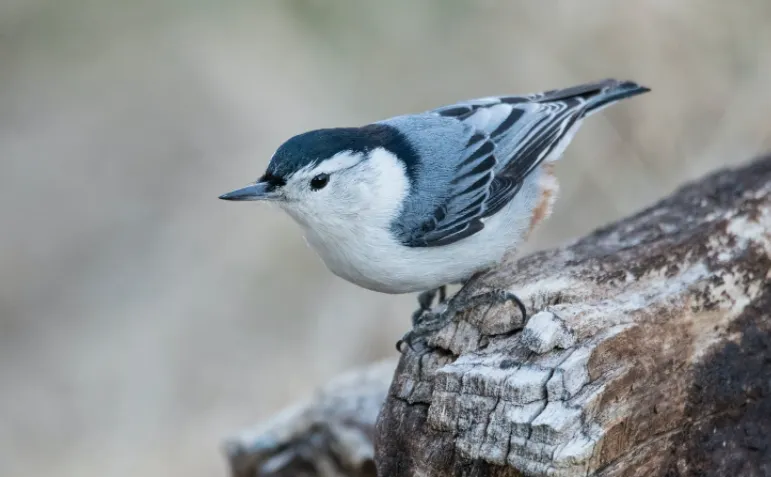
The White-breasted Nuthatch is a small bird with blue gray wings and a white face and breast. They have a black cap and a short, stout bill. Males and females look similar. Juveniles are brown birds. These birds are found in woodlands across North America.
White-breasted Nuthatches eat mostly insects and seeds. They will often cling to the side of a tree and pick food items from cracks in the bark. In winter, they may form small flocks and forage together.
These birds nest in cavities in trees. The female will build the nest using twigs, leaves, grass, and other materials. She will lay between four and eight eggs, which she will incubate for about two weeks. The young birds will fledge the nest after about three weeks.

Tufted Titmouse
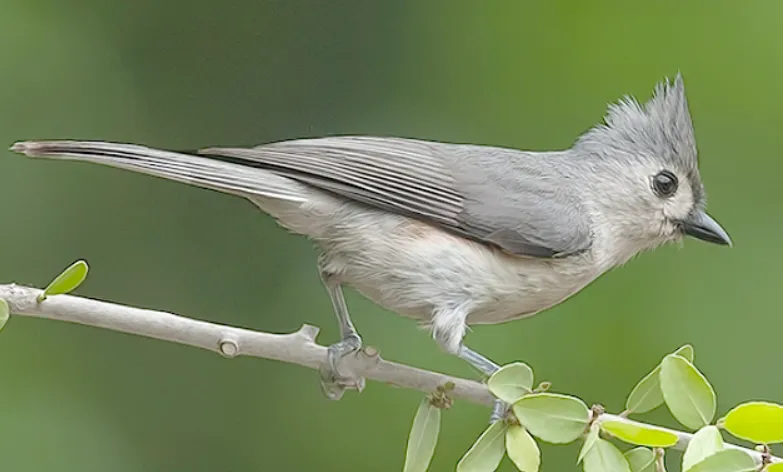
Tufted Titmice is a small bird with a big personality. These acrobatic little birds are easily recognized by their tufted head feathers, giving them their name. Tufted Titmice are gray with white underparts and have black faces with striking white eyebrows. They are found in woodlands and forests throughout the eastern United States.
Tufted Titmice are small birds, measuring only about five and a half inches long. They have a diet that consists mostly of insects. These little birds are acrobatic and agile, making them fun to watch as they flit around in search of food.
Tufted Titmice are found in woodlands and forests throughout the eastern United States. They prefer habitats with dense trees and plenty of cover. These little birds are social creatures and often travel in small flocks.

American Tree Sparrow
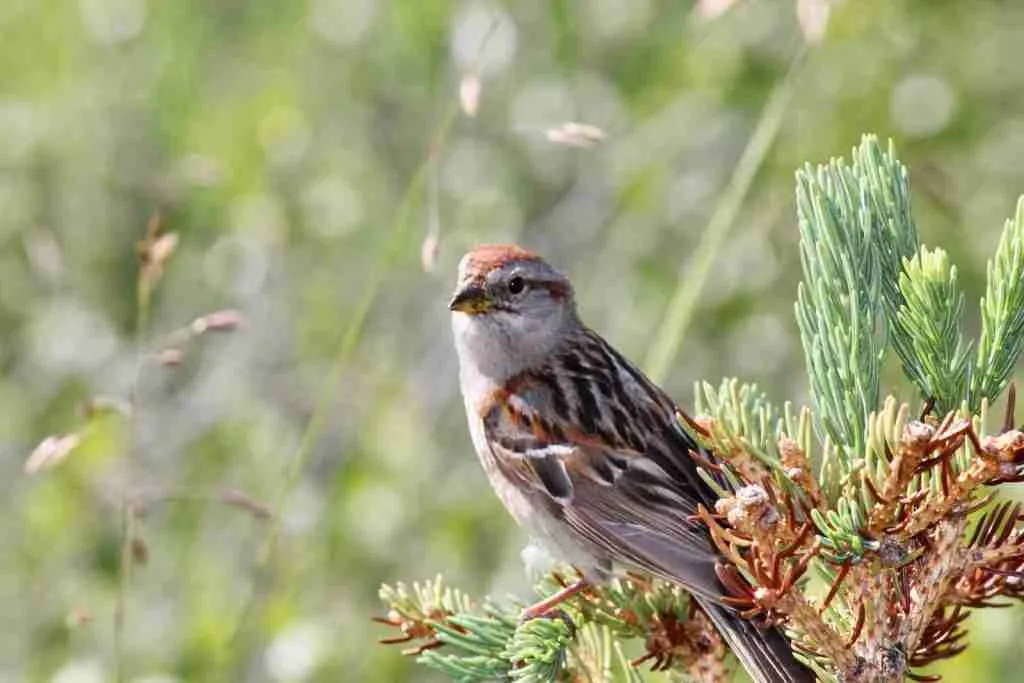
American Tree Sparrows are small sparrows with rusty-red cap and nape contrasting with pale gray face and upperparts. They have two white wing bars, a dark line through the eye, and a short notched tail.
Their diet consists of insects, spiders, seeds, and berries. These sparrows breed in open woods across Canada and the northern United States.
They build their nests on the ground, usually hidden under a log or shrub. American Tree Sparrows are shy birds that keep to themselves, but will sometimes form small flocks outside of breeding season. These sparrows are permanent residents in Michigan.
American Tree Sparrows are small sparrows, measuring only about six inches in length. They have rusty-red caps and napes, with pale gray faces and upperparts. Their wings are marked with two white wing bars, and they have a dark line through their eyes. Their tails are short and notched.

House Sparrow
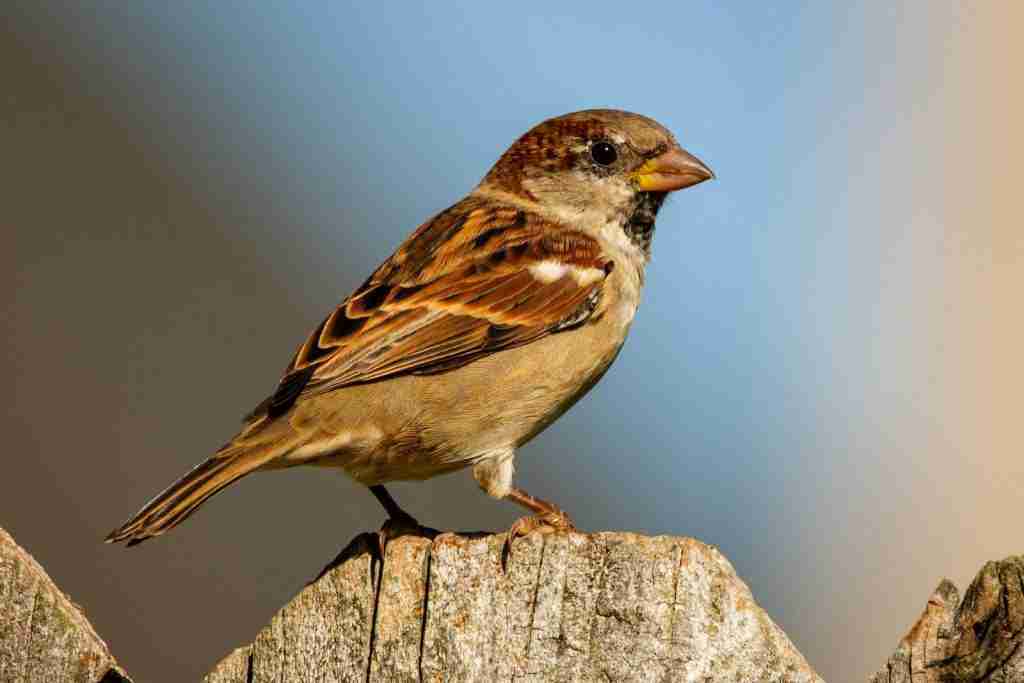
House Sparrows are one of the most easily identified birds in North America. They are small, plump birds with brown upperparts and grayish-white underparts. The males have gray crowns and napes, black throats, and white cheeks. Females and young birds have duller plumage and lack the black throat.
House Sparrows are seedeaters and eat mostly weed seeds. You can find them in a variety of habitats, including urban areas, farmland, and forests. They nest in cavities in trees, buildings, or other structures.
House Sparrows are social birds and often form large flocks. They can be aggressive towards other birds and will compete for food and nesting sites.

American Robin
(Turdus migratorius)
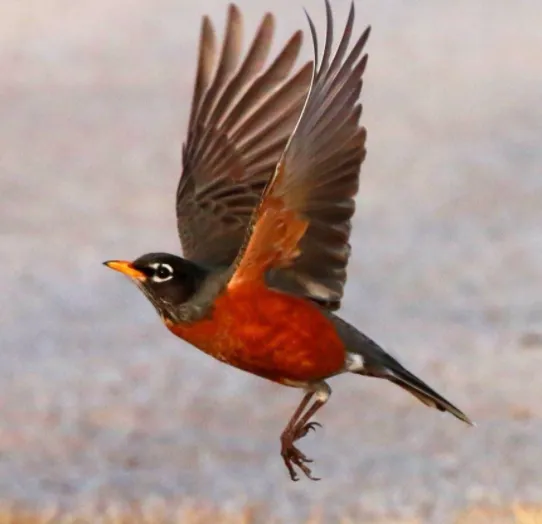
The American Robin is a plump bird with a small head, short neck, and round body. It has bright orange-red breast, pale gray back and wings with black feathers on the wingtips. The tail is dark with white outer feathers. Males and females look alike.
Juveniles have browner plumage and spots on their breast. This bird is about 16-20 cm in length with a wingspan of 25-30 cm.
The American Robin is a common sight across North America. It can be found in woods, gardens, parks, and open areas. Robins are mostly active during the day as they forage for food.
They eat mostly insects but will also consume berries and fruits. In the winter, their diet consists of earthworms and other invertebrates.

Red-Breasted Nuthatch

The red-breasted nuthatch is a small songbird with blue-gray upperparts and a rusty breast. It has a black cap, white cheeks, and a long, black bill. This nuthatch is about five inches long and weighs less than an ounce.
The red-breasted nuthatch is found in woodlands across North America. It feeds on insects, seeds, and nuts. This nuthatch often hangs upside down while feeding.
The red-breasted nuthatch nests in cavities in trees. Both the male and female help to excavate the nest cavity. The female builds the nest out of twigs, leaves, and grass. She lays four to eight eggs in the nest.
The red-breasted nuthatch is a non-migratory bird. It is a year-round resident in its range. This nuthatch is a common backyard bird in Michigan. You can attract them to your yard by putting out bird feeders with sunflower seeds. You may also hear their distinctive call, which sounds like a rapid “yank-yank.”

Red-bellied Woodpecker
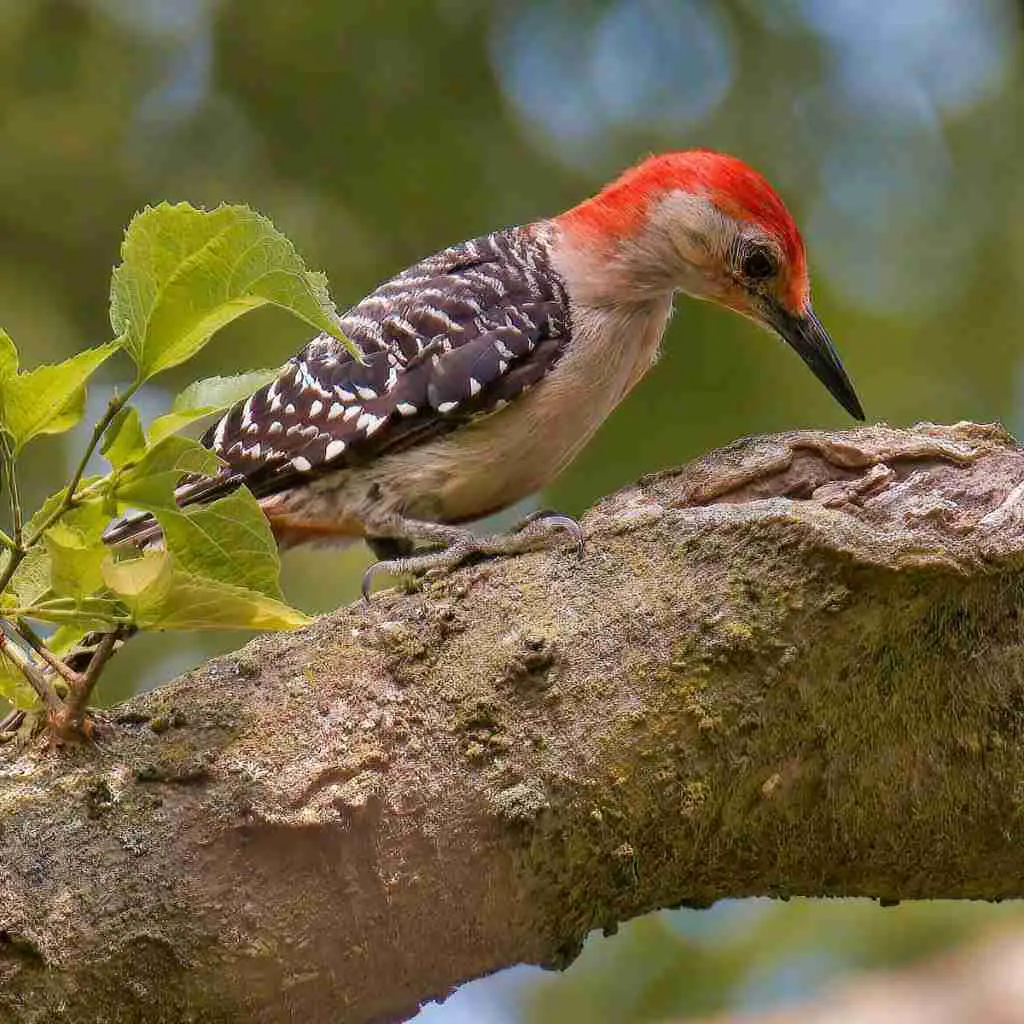
The Red-bellied Woodpecker is a common bird found in Michigan. It is easily identified by its red belly and black and white stripes on its back.
The diet of the Red-bellied Woodpecker consists mainly of insects, which it catches by drilling holes into tree bark with its long beak. These birds are medium sized, with a wingspan of around 16 inches. They can be found in wooded areas near rivers and lakes.
The Red-bellied Woodpecker is known for its loud drumming, which it uses to attract mates and warn other birds of its territory. This bird is also known to use its long tongue to reach inside tree crevices and catch insects.

American Crow

American Crow is the biggest of all warblers. The adult male has a black back, head, and tail. The wings are gray with two white bars. There is a yellow patch on the throat and breast. Females and young birds have brownish upperparts and yellowish underparts. These warblers eat insects. They nest in trees near water.
American Crow Warblers are the biggest of all warblers. The adult male has a black back, head, and tail. The wings are gray with two white bars. There is a yellow patch on the throat and breast.
Females and young birds have brownish upperparts and yellowish underparts. These warblers eat insects. They nest in trees near water.

Downy Woodpecker
(Picoides pubescens)
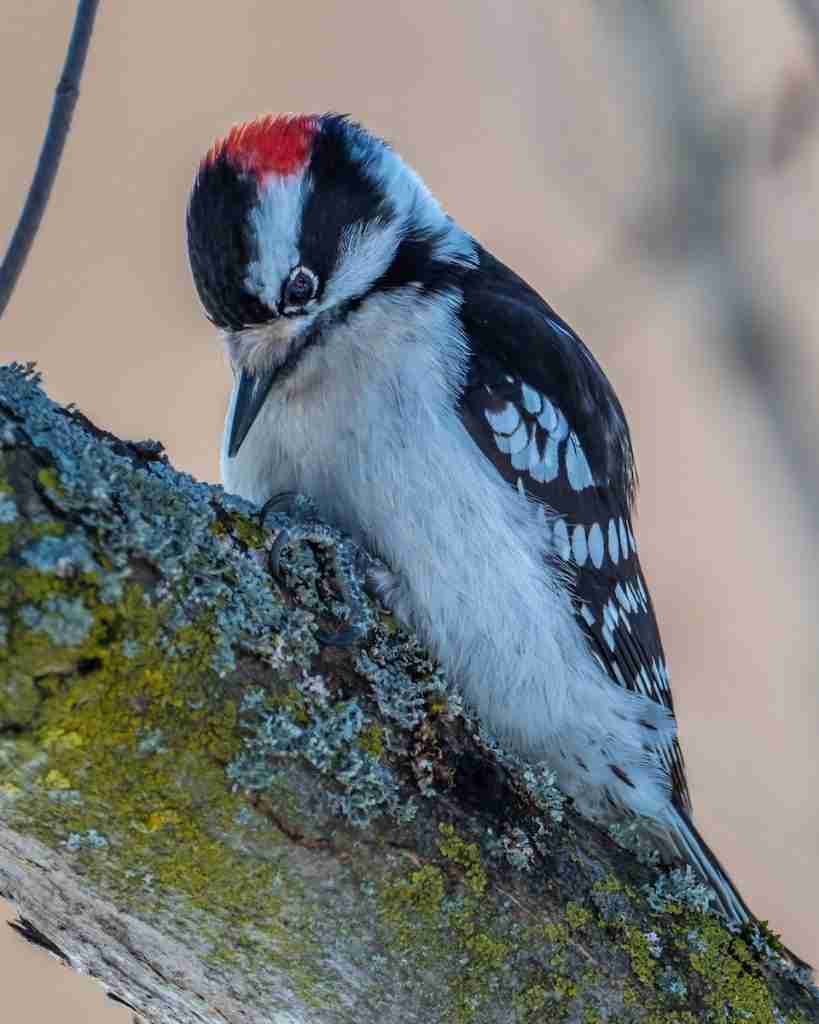
The Downy Woodpecker is the smallest woodpecker in North America, at about seven inches in length. It has a black body with white stripes running down its back, and a small patch of red feathers on the back of its head.
The Downy Woodpecker can be found in forests and woodlands across North America. It feeds on insects, spiders, and other small invertebrates.
The Downy Woodpecker is a common bird in Michigan. It can be found in both deciduous and coniferous forests, and is a year-round resident of the state. The Downy Woodpecker is a relatively small bird, but it is a very active one. It is often seen climbing tree trunks and branches in search of food.
The Downy Woodpecker is a very important bird in the forest ecosystem. It plays a key role in controlling insect populations, and helps to keep the forest healthy.

Hairy Woodpecker
(Picoides villosus)
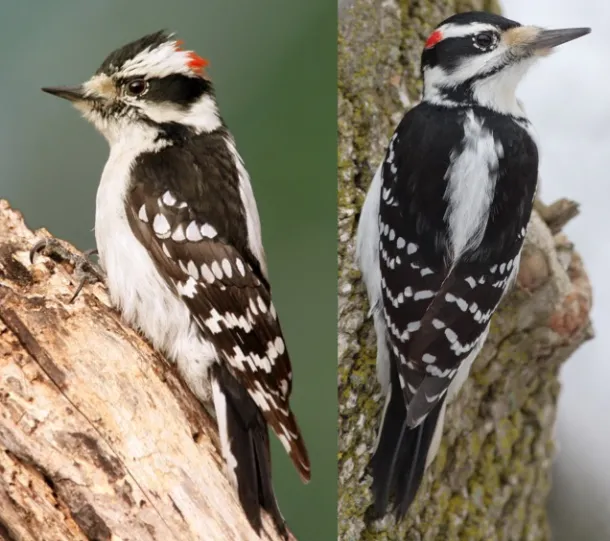
The Hairy Woodpecker is a black and white woodpecker that is common throughout North America. It has a long bill and a distinctive red patch on the back of its head. The Hairy Woodpecker is a medium-sized bird, measuring about nine inches in length.
It has a black body with white stripes on its wings and tail. The Hairy Woodpecker is found in a variety of habitats, including forests, woodlands, and suburban areas. It feeds on insects, fruits, and nuts. The Hairy Woodpecker is an important bird for the ecosystem because it helps to control insect populations.
The Hairy Woodpecker is a shy bird and is not often seen by humans. However, it can be heard drumming on trees in search of food. The Hairy Woodpecker is a beautiful bird that is an important part of the ecosystem.

Dark-Eyed Junco
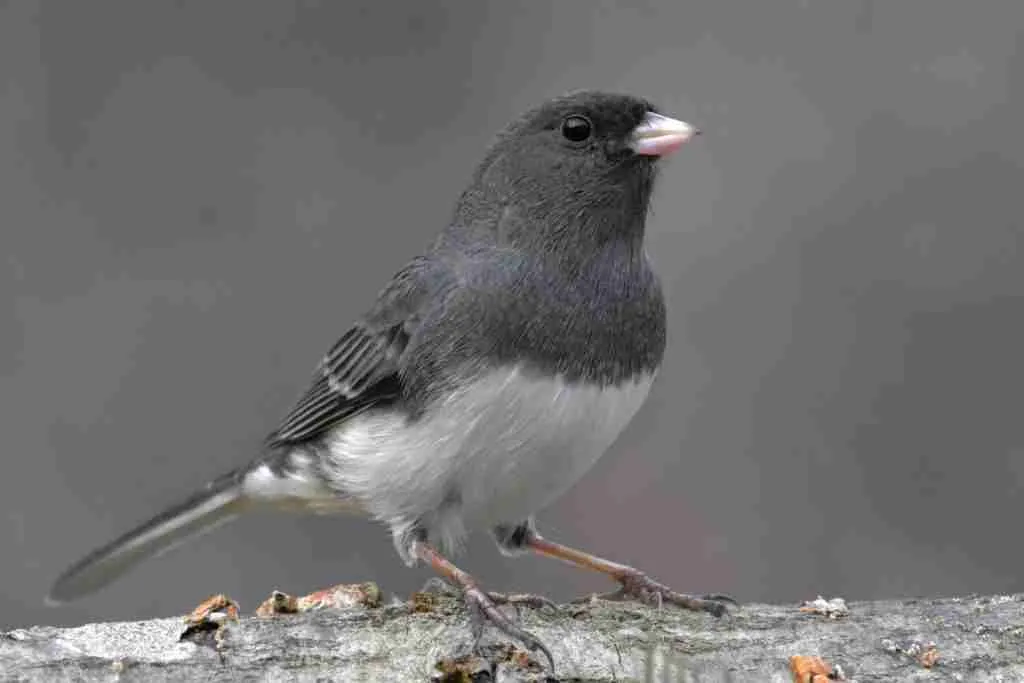
The Dark-Eyed Junco is a small sparrow with a gray back and wings, white belly, and rust-colored sides. It has a dark gray head with a white throat and two white stripes above the eyes. The junco’s bill is pinkish-gray, and its legs are brown. This bird measures about six inches long and has a wingspan of eight to nine inches.
The Dark-Eyed Junco is found in forests and woodlands across North America. It typically nests in trees, but will also build its nest on the ground or in shrubs. The junco’s diet consists of insects, seeds, and berries.
This bird is usually seen in small flocks, often foraging on the ground. The Dark-Eyed Junco is a songbird, and its songs are simple trills. This bird typically breeds in the spring and summer months.

Blue Jays
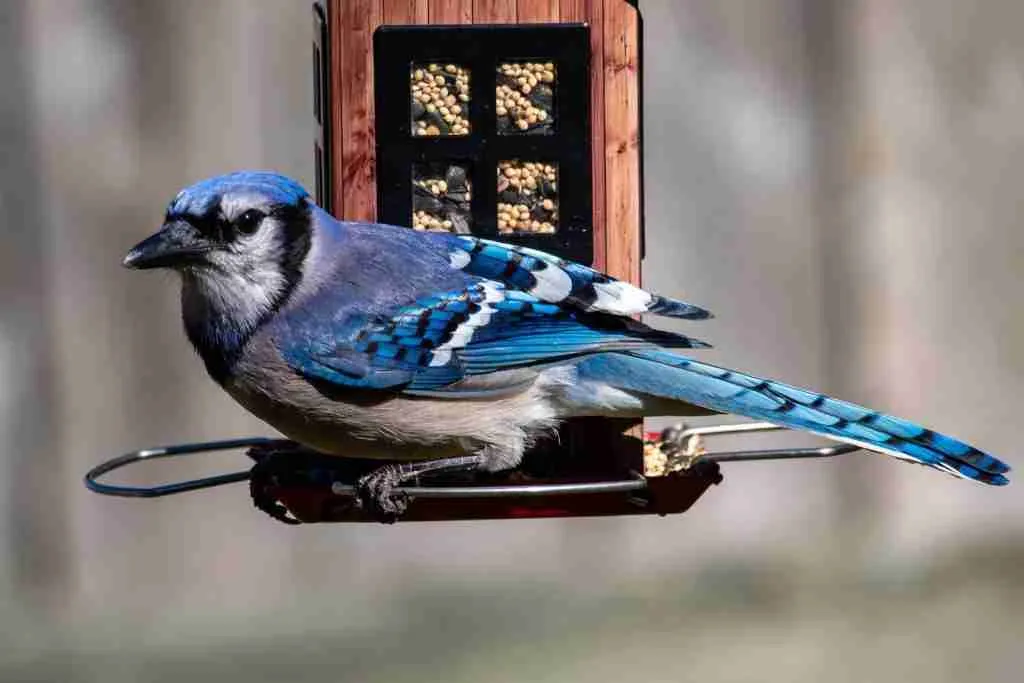
Blue Jays are one of the most common birds in Michigan. They are easily identified by their blue feathers and white belly. Blue Jays are also known for their loud calls.
Blue Jays are mostly found in wooded areas near forests. They eat a variety of foods, including insects, nuts, and berries. Blue Jays typically mate for life and have between two and six offspring.
Blue Jays are relatively small birds, measuring about ten inches in length. They have a wingspan of about sixteen inches. Blue Jays typically live between seven and eight years in the wild.

Black-capped Chickadee

The Black-capped Chickadee is a small, black and white bird with a black cap and bib. They are found in wooded areas in North America and are common in Michigan. Chickadees are active birds that are constantly moving as they search for food.
They eat insects, spiders, berries, and seeds. Chickadees will often cache (hide) food for later use. Black-capped Chickadees are non-migratory birds and will remain in their territories year-round.
These birds are social creatures and often form small flocks. Chickadees are not shy around humans and will often approach people in search of food.

European Starlings
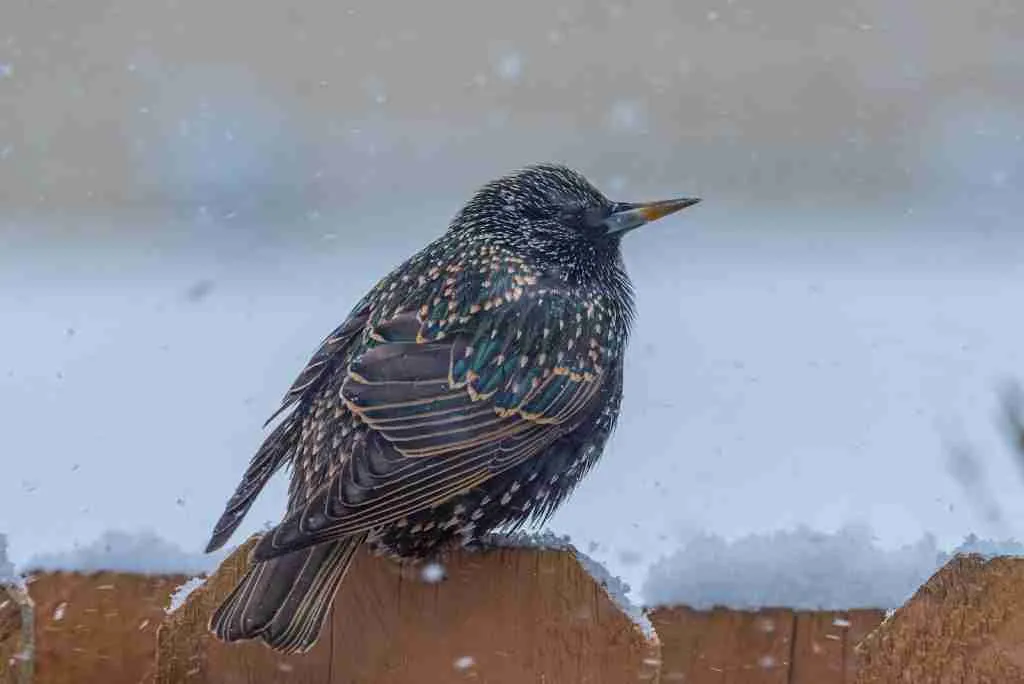
European Starlings are small to medium-sized birds. They have black plumage with metallic green and purple feathers. The males usually have brighter plumage than the females.
European Starlings are found in open woodlands, farmland, and gardens. They eat insects, fruits, and berries. European Starlings are known for their vocalizations.
They make a variety of sounds including chirps, clicks, and trills. European Starlings are also known to mimic the sounds of other birds and animals.

Northern Flicker
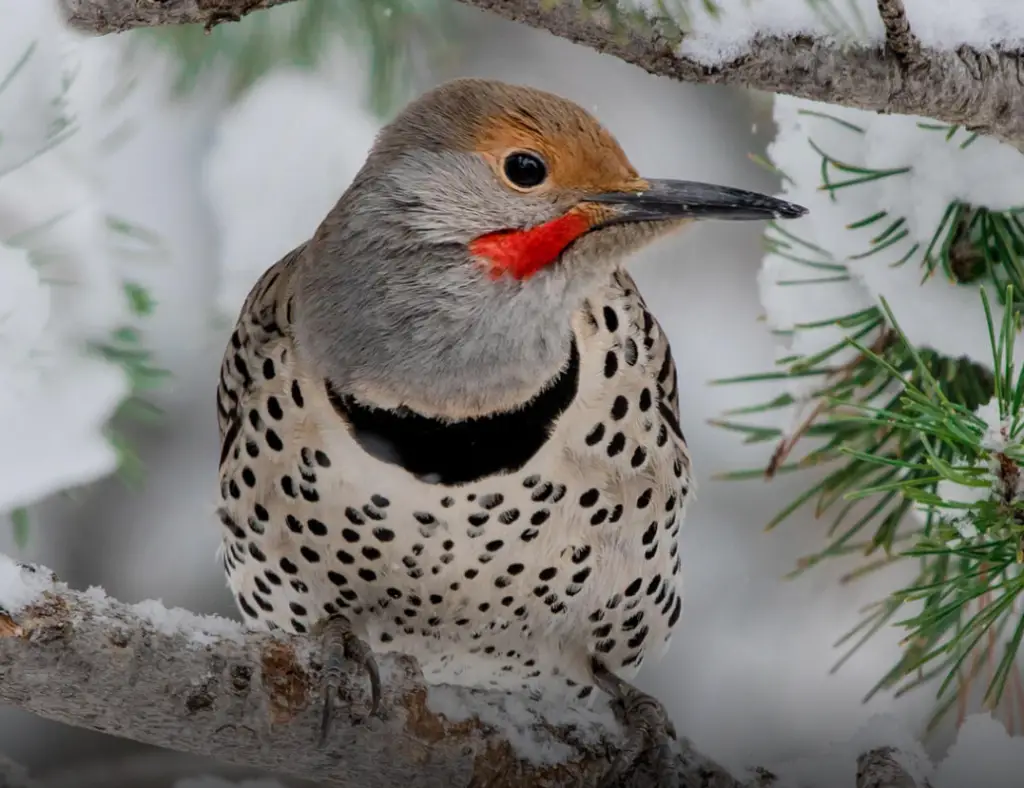
The Northern Flicker is a medium-sized bird with a long tail and pointed wings. The back is brown with black bars, the underparts are pale with black spots, and the head has a red cap.
Males have a black mustache mark. These birds are often seen on the ground probing for ants and other insects with their long bills.
They also eat fruits, berries, and seeds. Northern Flickers are found in woodlands across North America. They make a drumming sound with their bill on a tree to attract mates and announce their territories. These birds are active during the day and roost at night in trees.

Common Grackle
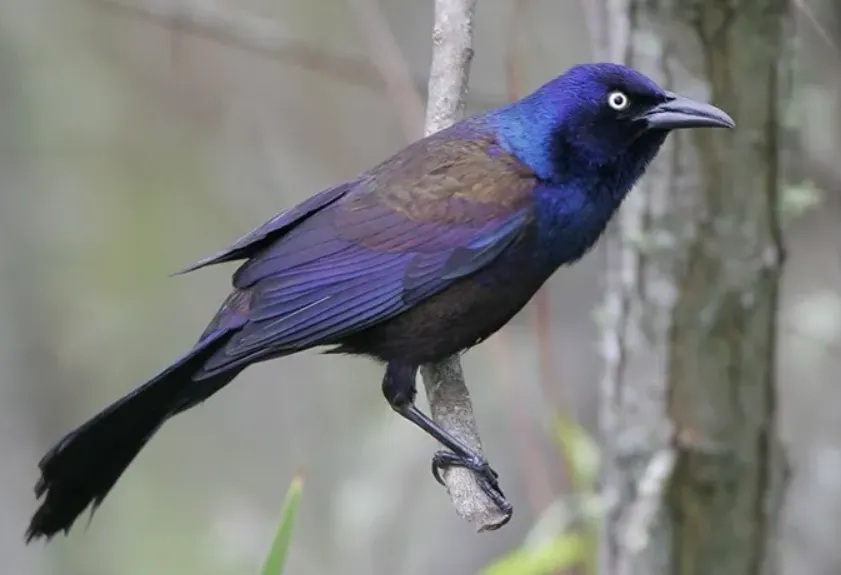
The Common Grackle is a large songbird with an iridescent black body and a long, keel-shaped tail. Males have a yellow eyes, while females have a brown eyes. These birds are found in open habitats such as fields, parks, and wetlands.
They forage on the ground for insects, seeds, and berries. In the winter, they often form large flocks. Common Grackles are about 11-12 inches long.

What birds can be found in Michigan?
There are many different types of birds that can be found in Michigan. Some of the more common ones include robins, cardinals, blue jays, and sparrows. However, there are also a variety of other less common birds that can be spotted in the state as well.
How do you find out what bird I saw?
To find out what bird you saw, you can use a variety of resources, including online identification guides, local experts, and field guides. You can also submit your sighting to an online database like eBird, which can help contribute to scientific research and conservation efforts.
If you’re unsure of where to start, try contacting your local Audubon Society chapter or nature center for assistance. With a little effort, you can usually identify the bird you saw and learn more about the amazing world of birds in the process!
What is the rarest bird in Michigan?
There are a few contenders for the title of rarest bird in Michigan. The Kirtland’s warbler is one of the rarest birds in North America, with only a few hundred breeding pairs remaining. The piping plover is another rarity, as there are fewer than 200 nesting pairs left in the Great Lakes region.
What is a black bird with yellow beak in Michigan?
The black bird with yellow beak is called a Common Grackle. The Common Grackle is found in many parts of North America, including Michigan. These birds are known for their iridescent black feathers and yellow eyes.
What kind of birds are there in Michigan?
There are approximately 275 different species of birds that have been documented in Michigan. This number includes both year-round residents as well as migratory birds. Some of the more common species that can be found in Michigan include: Bald Eagles, American Robins, Blue Jays, and Cardinals.
However, there is always the chance to spot a rarer bird as well, such as the Yellow-Bellied Sapsucker or the Kirtland’s Warbler. Michigan is truly a birdwatcher’s paradise!
How do I identify a bird in my backyard?
There are a few things you can look for when trying to identify a bird in your backyard. First, pay attention to the size and shape of the bird. Is it small and round, or large and thin? Second, take a look at the coloration of the feathers. Are they brightly colored, or more subdued?
Finally, notice the bird’s behavior. Is it actively flying around, or sitting still in a tree? By considering these three things, you should be able to get a good idea of what kind of bird you’re looking at.
Bird Feeders
Do you love spending time outdoors surrounded by beautiful wildlife? If so, one way to bring even more birds and other animals into your yard is by providing them with a reliable food source: a bird feeder! By following these simple steps, you can build your own bird feeder that will provide food for years to come.
First, choose a spot in your yard that is away from trees or bushes, as this will give the birds a clear view of predators. Next, gather your supplies. You will need a plastic bottle, some wire, scissors, and birdseed.
Once you have everything you need, cut the bottom off of the plastic bottle and make two small holes near the top. These holes will be for the wire, which you will use to hang the feeder.
Now it’s time to put everything together! First, thread the wire through the holes in the bottle. Next, tie a knot at the top of each piece of wire so that it is secure. Finally, fill the bottle with birdseed and watch as your feathered friends come to enjoy a meal!
What are winter birds in Michigan?
Bird species in Michigan vary depending on the season. In winter, some of the more common birds include: Snow Buntings, Common Redpolls, and Pine Grosbeaks. Keep an eye out for these and other birds as you enjoy the winter season!

An avid ornithologist, zoologist and biologist with an unwavering passion for birds and wild animals.
Dr. Wilson’s journey in ornithology began in childhood and led him to obtain a Ph.D. in Ornithology from the prestigious Avian Research Institute. He has worked closely with renowned experts in the field and conducted extensive research and field studies globally.

